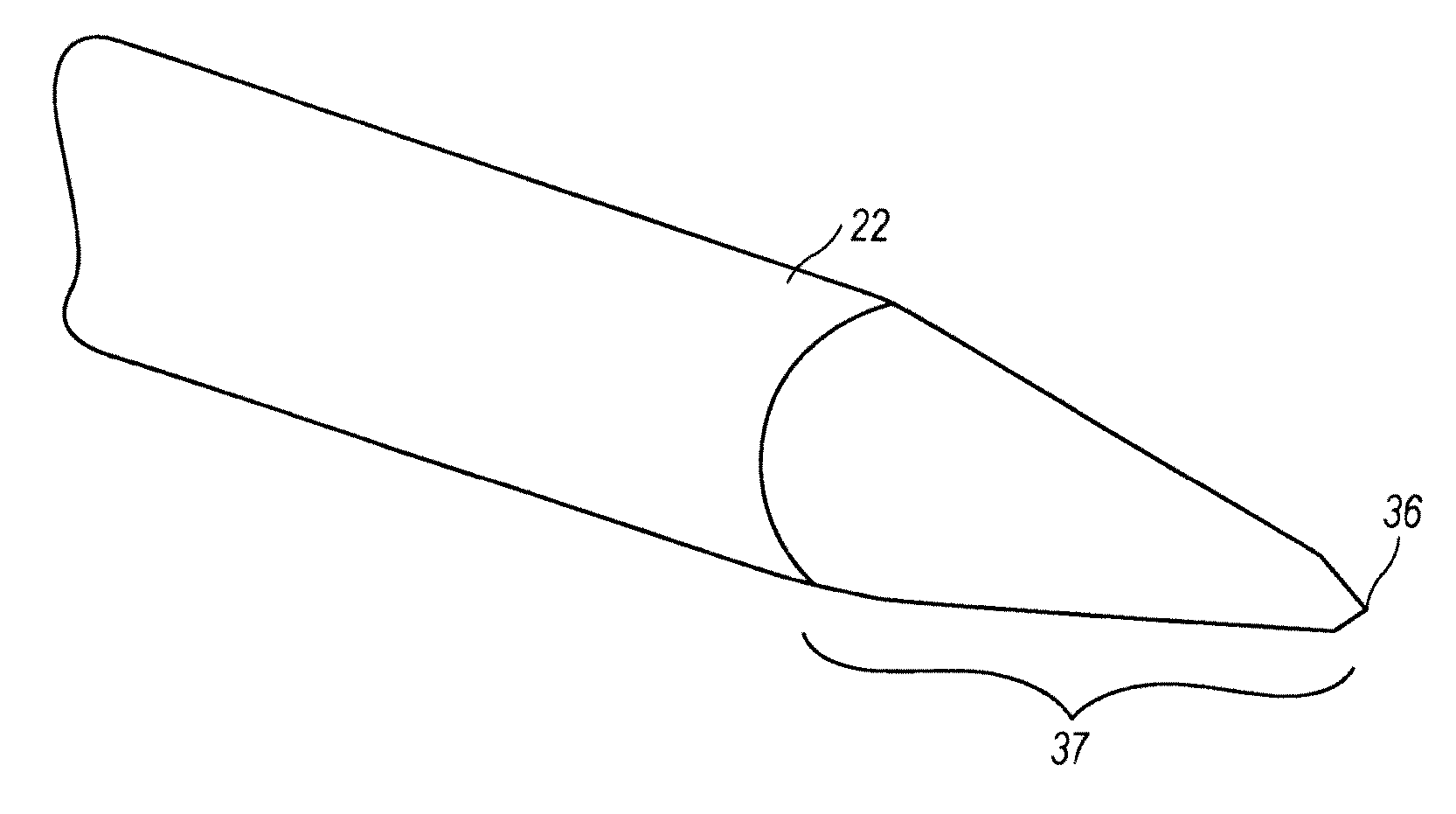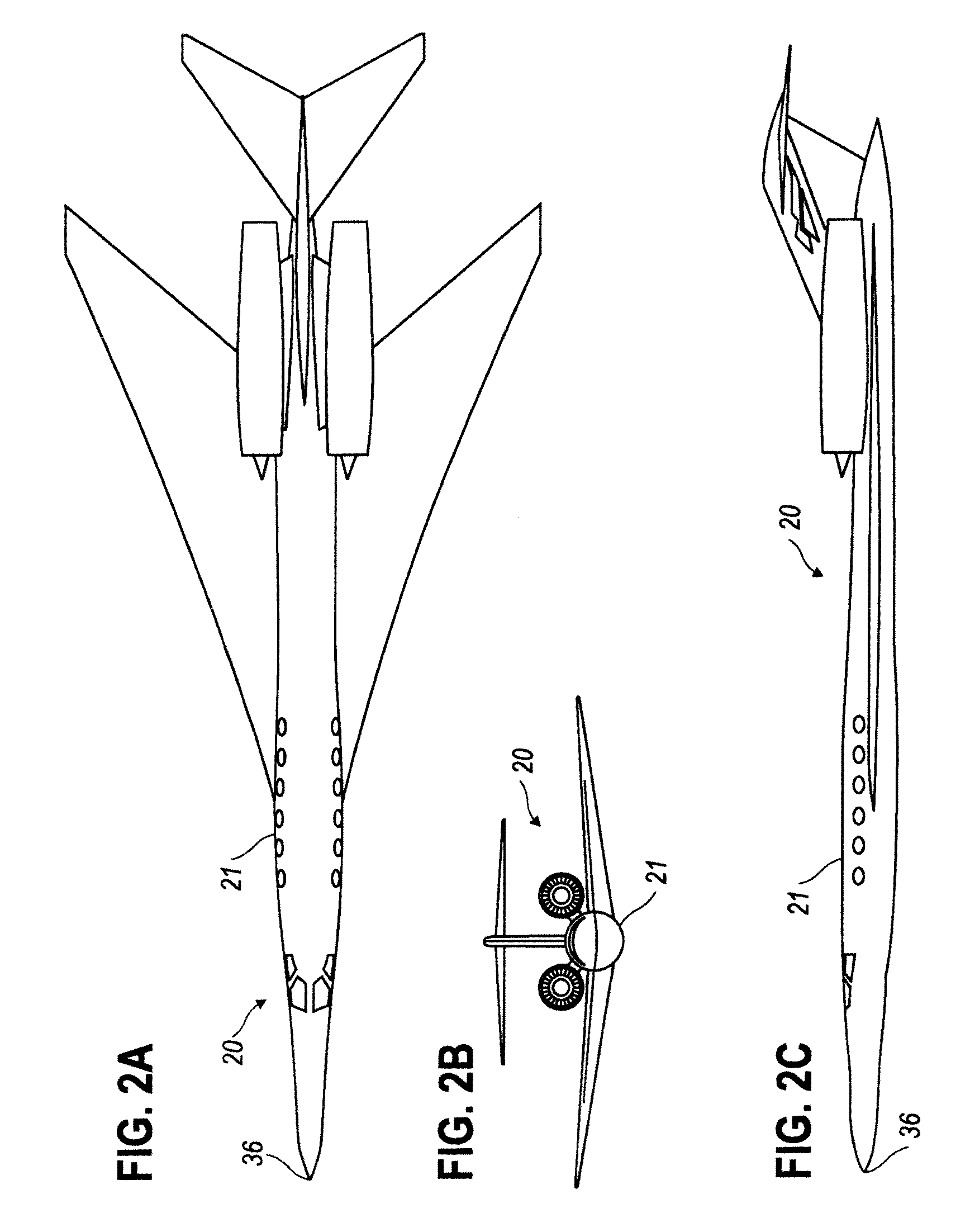Supersonic Aircraft with Spike for Controlling and Reducing Sonic Boom
a supersonic aircraft and boom technology, applied in the direction of fuselages, airflow influencers, transportation and packaging, etc., can solve the problems of restricted supersonic flight over some populated areas, objectionably loud noise, and significant acoustic disturbances called sonic booms, so as to minimize the effect of sonic boom, reduce the plane's lower profile substantially, and reduce the effect of ground level sonic boom effects
- Summary
- Abstract
- Description
- Claims
- Application Information
AI Technical Summary
Benefits of technology
Problems solved by technology
Method used
Image
Examples
Embodiment Construction
[0070]The propagation characteristics of shock waves created by supersonic aircraft can be analyzed using, for example, CFD analysis methods. These analyses can be complicated because an aircraft includes many components (for example, a fuselage, wings, engines, tailfin, etc.) that contribute to such disturbances. However, such analyses commonly are simplified by modeling the aircraft as a semi-infinite body of revolution. Analyses indicate that shock waves propagate substantially uniformly about supersonic aircraft modeled in this manner.
[0071]FIGS. 3A and 3B provide perspective and front elevation views, respectively, of an aircraft represented as a semi-infinite equivalent body of revolution 22, with the front of the aircraft corresponding to point 36 on the equivalent body of revolution. Equivalent body of revolution 22 models the atmospheric disturbance caused by the flight of the aircraft it represents. More particularly, equivalent body of revolution 22 models the atmospheric...
PUM
 Login to View More
Login to View More Abstract
Description
Claims
Application Information
 Login to View More
Login to View More - R&D
- Intellectual Property
- Life Sciences
- Materials
- Tech Scout
- Unparalleled Data Quality
- Higher Quality Content
- 60% Fewer Hallucinations
Browse by: Latest US Patents, China's latest patents, Technical Efficacy Thesaurus, Application Domain, Technology Topic, Popular Technical Reports.
© 2025 PatSnap. All rights reserved.Legal|Privacy policy|Modern Slavery Act Transparency Statement|Sitemap|About US| Contact US: help@patsnap.com



